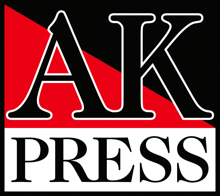Anarchist Publishing in Istanbul
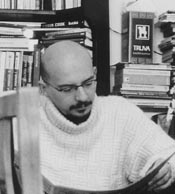 Former AK Press collective member (and perpetual helper and copyeditor) Chuck Morse sent me a link to Süreyyya Evren’s blog post about his experiences doing anarchist publishing in Turkey. It’s an interesting recounting and analysis of the methods, strategies, and complications of one group’s attempts to disseminate anarcho-proaganda. And here it is…
Former AK Press collective member (and perpetual helper and copyeditor) Chuck Morse sent me a link to Süreyyya Evren’s blog post about his experiences doing anarchist publishing in Turkey. It’s an interesting recounting and analysis of the methods, strategies, and complications of one group’s attempts to disseminate anarcho-proaganda. And here it is…
******************
Alternative Publishing Experiences in Istanbul
Süreyyya Evren
I would like to base this “action note” on our experiences of publishing anarchist materials in Istanbul in the last decade as an affinity group that mainly works on postanarchism. I will try to focus on two aspects of our experience.
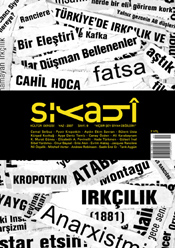 First I would like to explain our position and our approach. Briefly, we have been actively working on a research and publication project in Istanbul from a poststructuralist anarchist perspective, or we can say a postanarchist perspective. Of course, what we understand by these terms needs to be discussed in detail, but at the risk of simplifying we can say it has been a kind of updated pananarchism; an anarchism that is understood beyond the limits of politics and one which includes post-eurocentric, non-modernistic elements, contemporary theoretical developments, and culture in a broad sense, which leads to a conception of an anarchism that grabs different fields and everyday life. When we are asked to summarize what we try to do, we simply describe it as a pursuit for heterodoxies in every possible field and an effort to enhance these fields of heterodoxies and challenge orthodoxies everywhere. And we make use of the works of contemporary philosophers like Foucault or Deleuze, so-called poststructuralists, and relating this body of theory to other sorts of political writings of people like Bakhtin or Franz Fanon. We try to develop an open methodology which doesn’t hesitate to employ third world studies, art practices and art theory, and political forms of activities. So although we had good relations with postanarchists of the English-speaking world (like Todd May, Saul Newman, and Lewis Call), we have developed a different path since we first made our postanarchist publications in mid-90s.
First I would like to explain our position and our approach. Briefly, we have been actively working on a research and publication project in Istanbul from a poststructuralist anarchist perspective, or we can say a postanarchist perspective. Of course, what we understand by these terms needs to be discussed in detail, but at the risk of simplifying we can say it has been a kind of updated pananarchism; an anarchism that is understood beyond the limits of politics and one which includes post-eurocentric, non-modernistic elements, contemporary theoretical developments, and culture in a broad sense, which leads to a conception of an anarchism that grabs different fields and everyday life. When we are asked to summarize what we try to do, we simply describe it as a pursuit for heterodoxies in every possible field and an effort to enhance these fields of heterodoxies and challenge orthodoxies everywhere. And we make use of the works of contemporary philosophers like Foucault or Deleuze, so-called poststructuralists, and relating this body of theory to other sorts of political writings of people like Bakhtin or Franz Fanon. We try to develop an open methodology which doesn’t hesitate to employ third world studies, art practices and art theory, and political forms of activities. So although we had good relations with postanarchists of the English-speaking world (like Todd May, Saul Newman, and Lewis Call), we have developed a different path since we first made our postanarchist publications in mid-90s.
Secondly, I would like to give some details and show how we tried to apply different forms of media in different periods of our project. I will try to draw the advantages and disadvantages we found in various forms of publishing. I hope this will be a useful survey of diverse modes of publishing, which gives clues for various possibilities. The methods we have been using for spreading and testing our political position will be evaluated together with their results.
Especially in the last 12 years, working as an affinity group of people who are interested in similar subjects, theoretical and political stances, we have passed through different alternative publication experiences. Here I would like to summarize and categorize these and then maybe compare and discuss possibilities.
We have had three main phases of alternative publishing.
1. The first period: Karasin Anarchist Collective.
Karasin Anarchist Collective was active between 1996 and 1998. It was a totally independent publishing period relying heavily on photocopy (xerox) magazines, newspapers, texts and pamphlets. No legal procedure was involved. As for the distribution of our publications we have used already existing networks of subcultural fanzine distribution; we also built a web site publishing everything we made so far in Karasin Anarchist Collective.
2. The second period: A period of “détournement“—Working inside other publications and media.
The second period of our alternative publishing dates to the period between 2000 and 2003. We have worked inside already existing structures, such as an established humanist literature magazine, a comics and culture magazine, a radio station, and a publication house—and continued to develop our postanarchist studies, combining them with different grounds and media.
3- The third period: Independent publishing and launching a separate legal magazine of our own—Siyahi.
That period was initiated in 2003 as an autonomous web site. After that we started to publish our magazine Siyahi, devoted to focus on postanarchist thought in November 2004. In total, we have published 7 issues of Siyahi.
Experiences
The first period: Karasin Anarchist Collective
Between 1996-1998, we called ourselves the Karasin Anarchist Collective. And in the context of the Karasin project we published a photocopied (xerox) magazine, a photocopied newspaper and pamphlets. We also used photocopy for copying certain texts. In total we did 2 issues of the magazine, 3 issues of the newspaper and 11 pamphlets. Karasin Anarchist Collective (in some places we called ourselves the Karasin Working Group) was composed of a small core of a few people [footnote 1].
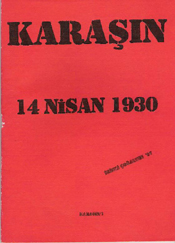 Karasin was formed of people who were translating, writing, reading, and discussing. I was active with a web site, photocopy magazine, photocopy newspaper, and pamphlets. But these were not its only activities. Long discussions had preceded our publications. As I remember it, a discussion period of nearly two years with different people came before publishing anything. We were having endless reflective talks about what we want to do. Before starting Karasin Anarchist Publications we did some works with the Karasin “logo” in some events in literature and politics.
Karasin was formed of people who were translating, writing, reading, and discussing. I was active with a web site, photocopy magazine, photocopy newspaper, and pamphlets. But these were not its only activities. Long discussions had preceded our publications. As I remember it, a discussion period of nearly two years with different people came before publishing anything. We were having endless reflective talks about what we want to do. Before starting Karasin Anarchist Publications we did some works with the Karasin “logo” in some events in literature and politics.
The first “photocopy action” we did was against one of the most established famous Turkish novelists. We wanted to challenge an elitist advertising campaign which abused the cultural field to create a status distance, an event followed later by a total commercialization of the publishing field. The first action can be understood as an action against market determined literature/culture.
We published the first Karasin magazine on the 14th of April 1996. This was the day the Russian poet Mayakovski died. And although he was not an anarchist, we had respect for him and his political stance and the gesture in this reference underlined our ties with literature as well [footnote 2].
Before Karasin, I personally had an experience with photocopy publishing already. With some friends, we had made photocopied books and magazines. Photocopying, in the early 1990s, was an important element of alternative publishing and alternative distribution for us. We had photocopied books and we even tried to distribute photocopied poems on the streets.
We had a completely fictive “photocopy publication house” called the “Zenci Kitaplar” (meaning “Negro Books”). Of course, there was nothing like that officially. We were photocopying literature books, stories and poems.
As the second action of Karasin Group, we duplicated an article of a very well known Turkish art critic as a form of protest. In that article the writer was talking about the necessity of the institution of police as such. As a result of our protest, which was only duplicating his article by stamping our logo on it, we triggered protests of fellow leftists directed to this critic.
After these two actions we started the pamphlets and Karasin magazine and turned our faces more to anarchism than literature.
The second issue of the KARASIN zine, 8 May 1997, was dedicated to the memory of the execution of Alexander Ulyanov who was Lenin’s brother and who attempted to assassinate the Russian czar Alexander III. For us, this dedication was also an indirect sign of our anti-Leninism.
The Karasin pamphlets we published included Sergey Neçayev’s Revolutionary Catechism, Peter Kropotkin’s Anarchism in Socialist Evolution, Anarchism, and On Order, Mikhail Bakunin’s Revolutionary Catechism, and Emma Goldman’s The Psychology of Political Violence. We also published Franz Fanon’s A Sociology of a Revolution (a chapter of “Transformation of a Family”), Fyodor Dostoyevski’s The Dream of a Strange Person, an anarchist interview with Zapatistas by Love and Rage Revolutionary Anarchist Federation in May 1994, a book on the 1992 Los Angeles uprising prepared by combining texts from different fanzines and essays about events.
How we worked:
We once bought a second-hand photocopy machine and used that at home, but this was not efficient at all. It was not good for an amateur group like us—it did not cut the expenses as we imagined. So we bought an all-in-one printer. That machine became the mother of Karasin publications till the end. Karasin was prioritizing becoming independent media, to be “outside” the institutions. We were writing, translating, preparing and publishing at home and distributing the results ourselves.
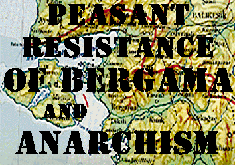 We also made two special pamphlets on specific events. One of them was on peasant resistance in the Turkish town Bergama (Peasant Resistance of Bergama and Anarchism, June 1998), including three essays on the subject written by Rahmi G. Ogdül, Fusun Kayra and Sureyyya Evren. It was also published on the net and re-published by some other websites. And the other special work was on a specific event in another small Turkish town, Fatsa, in 1979. Between 26th and 28th of August 1998, we (me and Rahmi), in the name of Karasin, attended the Lisbon “International Conference on the Politics of Social Ecology.” We presented our talk “Direct Democracy in Fatsa” and also photocopied a pamphlet of our talk. (That pamphlet was also translated into Portuguese and published on the net.)
We also made two special pamphlets on specific events. One of them was on peasant resistance in the Turkish town Bergama (Peasant Resistance of Bergama and Anarchism, June 1998), including three essays on the subject written by Rahmi G. Ogdül, Fusun Kayra and Sureyyya Evren. It was also published on the net and re-published by some other websites. And the other special work was on a specific event in another small Turkish town, Fatsa, in 1979. Between 26th and 28th of August 1998, we (me and Rahmi), in the name of Karasin, attended the Lisbon “International Conference on the Politics of Social Ecology.” We presented our talk “Direct Democracy in Fatsa” and also photocopied a pamphlet of our talk. (That pamphlet was also translated into Portuguese and published on the net.)
And lastly, we xeroxed the Gazete Karasin (Newspaper Karasin). We produced the first issue as a monthly photocopy newspaper, dated 30th November 1998.
Parallel to photocopy publishing, we prepared a website for our Karasin collective in a free space from Geocities. Geocities was not a part of Yahoo at that point. The last updates to the web site were made in 1998. We put a free tracker program on the main page and as we have checked statistics, we thought maybe the real broadening effect can be achieved via a web site. But after a while in which we didn’t update the site, Geocities/Yahoo canceled it (some parts of it can now be seen through web archive sites under http://come.to/karasin). Actually, these simply structured web pages achieved a lot. These pages made texts to reach so many places and stayed so long alive.
And internet publication was much much easier.
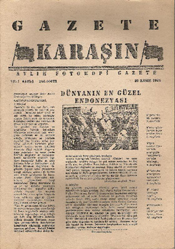 With photocopy publishing we had serious distribution problems. We were finding shelves in punk-rock oriented music shops, and yet everyday more and more bookshops started to demand invoices or directly stopped selling unregistered photocopy magazines. We were having real difficulty in distributing our material in other cities. Besides Istanbul, we were only distributing small amounts in Ankara and Bursa. We were having much more feedback through our website. Readers were able to download and print out all the material. We know that some people even made pamphlets themselves after downloading the stuff. Photocopying was limiting our dialogue with people outside the anarchist and subculture circles. We wanted to spread our ideas to a larger amount of readers, to different people with different interests. As our aim was to affect all aspects of life and to strengthen heterodoxies, we wanted to diffuse into various fields. So we shifted towards the second period, where our ideas met not only anarchist and punk communities but many people with diverse concerns in different parts of Turkey.
With photocopy publishing we had serious distribution problems. We were finding shelves in punk-rock oriented music shops, and yet everyday more and more bookshops started to demand invoices or directly stopped selling unregistered photocopy magazines. We were having real difficulty in distributing our material in other cities. Besides Istanbul, we were only distributing small amounts in Ankara and Bursa. We were having much more feedback through our website. Readers were able to download and print out all the material. We know that some people even made pamphlets themselves after downloading the stuff. Photocopying was limiting our dialogue with people outside the anarchist and subculture circles. We wanted to spread our ideas to a larger amount of readers, to different people with different interests. As our aim was to affect all aspects of life and to strengthen heterodoxies, we wanted to diffuse into various fields. So we shifted towards the second period, where our ideas met not only anarchist and punk communities but many people with diverse concerns in different parts of Turkey.
The second period: A period of “détournement”—working inside other publications and media
In this period we mainly worked inside the oldest Turkish literature magazine. Slowly, we found ourselves more close to that magazine. In September 1998, they published my essay on the third-wave of anarchism that focused on the history of anarchism and anarchism in the late 90s. The editor-in-chief had sympathy for our ideas and we found a place inside the magazine for preparing special dossiers that related to postanarchistic topics such as poststructuralist anarchism. Beginning with a special dossier on hypertext, we started to prepare a series of dossiers focusing on various theoretical topics that we link to our postanarchist agenda.
So between 2000-2002 we worked inside different media platforms: sometimes we tried to transform them, sometimes we tried to change their direction a bit, and sometimes we just wanted to live and function inside in our own way without changing it. In this period, with Rahmi, we developed a radical poststructuralist anarchist approach through the articles we wrote for Turkey’s oldest literature magazine over two years. During that period, I worked as a co-editor in the magazine preparing special dossiers on theoretically charged concepts as hypertext, postfeminism, potlatch, metageography, everyday life, rhizomatic thinking, cyberfeminism etc. We also wrote for another monthly popular Turkish magazine, which was widely circulated because it was a comic magazine as well. It had nearly 20,000 readers across the country, and there we tried to find writing forms to embrace everyday life and actual political agenda for non-professional readers. We used dialogues, photographs, jokes etc.
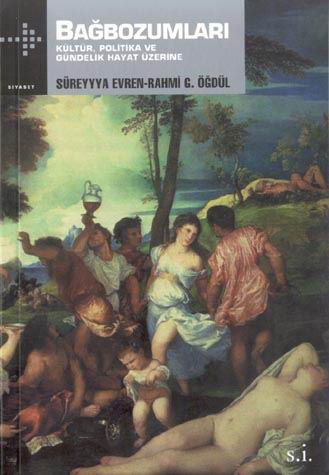 Subsequently we collected our accumulated articles in a volume with the title Bagbozumlari (Vintages), On Culture, Politics and Everyday Life in Studyo Imge Books, 2002. This was a publication house which mostly had a reputation on rock culture. (We also initiated the Turkish edition of Hakim Bey’s TAZ there.) Soon, again in Studyo Imge Books, we edited another volume as a collection of texts taken from various sources titled Another World Is Possible (ed. Sureyyya Evren & Rahmi G. Ogdul, Studyo Imge Books, 2002, Istanbul) basing it on “anti-globalisation movements” and related bodies of theories.
Subsequently we collected our accumulated articles in a volume with the title Bagbozumlari (Vintages), On Culture, Politics and Everyday Life in Studyo Imge Books, 2002. This was a publication house which mostly had a reputation on rock culture. (We also initiated the Turkish edition of Hakim Bey’s TAZ there.) Soon, again in Studyo Imge Books, we edited another volume as a collection of texts taken from various sources titled Another World Is Possible (ed. Sureyyya Evren & Rahmi G. Ogdul, Studyo Imge Books, 2002, Istanbul) basing it on “anti-globalisation movements” and related bodies of theories.
This period ends with a radio program. Again with Rahmi, we initiated a radio program with the same title Bagbozumlari on the prestigious and independent broadcasting organization “Acik Radyo” (”Open Radio”) from Istanbul. We had various guests for our radio show for talks on art, culture, everyday life, and political struggles. (Spanish anarchist Abel Paz was one of the international guests beside Turkish anarchists or writers.) Many shows focused on anarchism and postanarchism.
So in this period, we worked in a literature magazine, a comics and culture/literature magazine, a radio station, and a publication house. The advantages included the possibility of reaching a much greater audience in different forms, developing our ideas thanks to many intersections, meeting new people interested in the subject or having new contributions from different angles.
But this period also had its disadvantages. This style of “working everywhere” was making it more difficult to understand our position for many people because everybody is not following every medium. The other contributors to the media we shared and the political and cultural differences in their stances had influenced the way our project was conceived by the general audience. Our neighbors, the other material used in these media, in these different bodies, were affecting our remarks somehow. As we were affecting them, they were affecting us as well and although this opened many positive new areas it was also limiting our expression. We were again in the need of media where we can initiate our own context and at the same time continue to retain our relations with a broader audience. Besides, readers develop prejudices about magazines, and whatever you publish may be either ignored (because of a prejudice about the magazine in question) or just labeled as something it is not even close to.
The third period: Making separate publishing and a separate legal magazine of our own—the Siyahi magazine.
Since 2003, we have been thinking about doing something alternative with our approach which will be a separate publication at the same time. But we did not want to do a photocopy magazine this time, we wanted printed material. But of course we didn’t have the means so we started with a website on www.postanarki.net (which is not active anymore). We published many articles in Turkish there and also collected related English articles in one website.
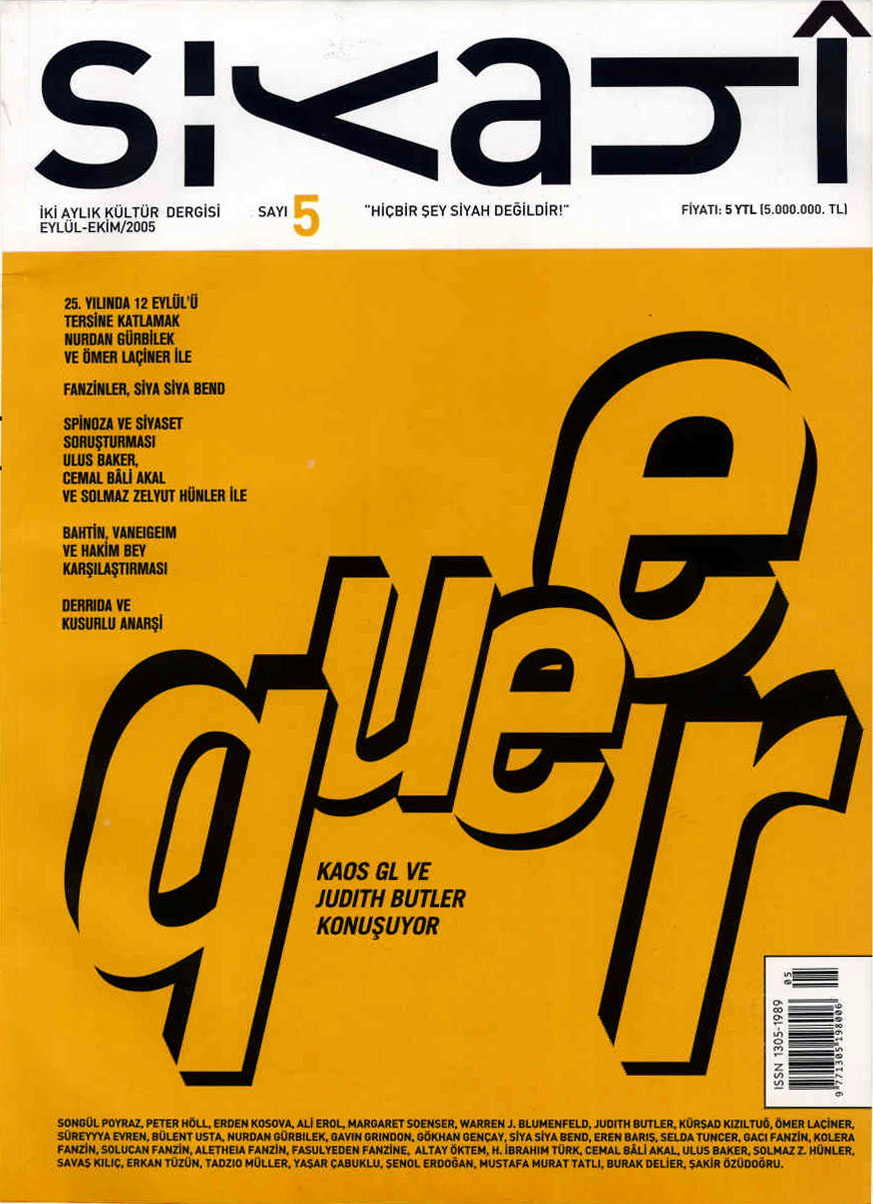 So then we started to make an independent magazine. We had the chance to work independently in a new independent publishing house (which mainly focused on poetry) and started to publish our magazine on November 2004. We published six issues with this publishing house but lately they have had financial problems and decided to focus more to on poetry and short story magazines where they can receive more advertisement income to keep the company alive. So we moved to an other publication house (art-ist) for enabling the publication of our 7th, 8th and 9th issues. In fact, we were already in close organic relations with art-ist contemporary art magazine. Erden Kosova and I were writing and working for art-ist magazine since its beginning and Erden has been also in the editorial board.
So then we started to make an independent magazine. We had the chance to work independently in a new independent publishing house (which mainly focused on poetry) and started to publish our magazine on November 2004. We published six issues with this publishing house but lately they have had financial problems and decided to focus more to on poetry and short story magazines where they can receive more advertisement income to keep the company alive. So we moved to an other publication house (art-ist) for enabling the publication of our 7th, 8th and 9th issues. In fact, we were already in close organic relations with art-ist contemporary art magazine. Erden Kosova and I were writing and working for art-ist magazine since its beginning and Erden has been also in the editorial board.
Siyahi is a platform for contemporary theory, culture, arts and politics related. We have published many articles on postanarchism, and generally politics and culture.
As you can see, we are working on postanarchism, but Siyahi includes other subjects too. Siyahi is distributed nationwide in Turkey without being able to pay any fees to its writers and translators, thanks to their volunteering contribution. We also tried to initiate an international version of Siyahi (that would be called Siyahi Interlocal) working with Jason Adams, but that project only resulted in a web blog.
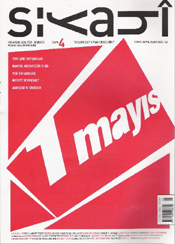 The postanarki web page and Siyahi shapes the third period. We started to make the postanarki web page in November 2003 by taking free space from Geocities again (www.geocities.com/postanarki). And in February 2004 we moved to www.postanarki.net with our separate domain name and hosting. Kursad Kiziltug, who joined us in the second period, was actively working for the web site. When we started to have the printed publication—Siyahi magazine—he didn’t have time to work on it, and we also felt the printed material was more essential. This web site is not active anymore. But it led us to create some international contacts and to circulate many texts in Turkish and English. For example, we met online with Jason Adams, the founder of Postanarchism Yahoo Group (October 2002) and the initiator of the Postanarchism Clearing House web pages, who later visited us in Istanbul. And we met online with Juergen Muemken who later started to make a web page in German on the subject www.postanarchismus.net and edited two volumes in German on the subject.
The postanarki web page and Siyahi shapes the third period. We started to make the postanarki web page in November 2003 by taking free space from Geocities again (www.geocities.com/postanarki). And in February 2004 we moved to www.postanarki.net with our separate domain name and hosting. Kursad Kiziltug, who joined us in the second period, was actively working for the web site. When we started to have the printed publication—Siyahi magazine—he didn’t have time to work on it, and we also felt the printed material was more essential. This web site is not active anymore. But it led us to create some international contacts and to circulate many texts in Turkish and English. For example, we met online with Jason Adams, the founder of Postanarchism Yahoo Group (October 2002) and the initiator of the Postanarchism Clearing House web pages, who later visited us in Istanbul. And we met online with Juergen Muemken who later started to make a web page in German on the subject www.postanarchismus.net and edited two volumes in German on the subject.
Siyahi marks the last period but apparently things will change again, because the distribution company that was distributing Siyahi just went bankrupt and this puts us in a severe financial crisis.
Conclusion: After three phases
As an affinity group, we kept working on the same line of anarchist thought, developed new ideas accordingly, and kept spreading our ideas in various forms. With the same ideological aim, we stayed “outside the system” by photocopy publishing, worked in other established institutions, or we made an independent magazine ourselves.
The best part of making photocopy publications is the feeling of being “away,” being “outside” the system. Of course, there are always debates asking if there is anything that can be labeled as “outside.” But still, you don’t give your names to official bodies to get printing permissions, you don’t have invoices, you don’t have advertisements, you don’t have barcodes. But you don’t have readers as well! I mean, of course you have readers, but it is very difficult to reach them, you don’t produce a lot and you can’t distribute a lot. In today’s conditions, it is the other way around; sometimes even a zine is like a simulation of a an e-zine… I sometimes feel that the e-zine is the real thing, and the zine is the simulation! The worst part of making photocopied publications is that you are very close to being proud of your distance with the system. The danger of sticking to an “anarchist identity” is definitely there.
On the other hand, as I travel to different places, I get the impression that the problem is about the lack of alternative distribution channels. When I visited the London Anarchist Book Fair and saw all those bulks of anarchist pamphlets, I felt like that the “photocopy still works.” There is some kind of a romanticsm in it which I also still share in some way. Nevertheless, as far as I know, photocopied publication is widely understood as a tool for propaganda in radical circles. It is rare to publish contemporary articles aiming to discuss contemporary theoretical issues in photocopied pamphlet or zine form. In Karasin, we had the intention of publishing articles that would be a contribution to theoretical debates in the Xerox form.
Reflecting on our second phase, the best part of working within various established magazines, radio stations, or publication houses is meeting new people, meeting new questions, reaching a wider audience, and testing and developing your ideas in different platforms. I can even say that it is like an education. How would postanarchism be “applied” in a discourse you use on a radio show or a popular magazine? How do you relate your anarchist or poststructuralist jargon with daily language? (this was also a question during few talks I gave on “Postmodernism and Left” in Istanbul and Ankara during mid 90s). It was also an important step in “enhancing fields of heterodoxies and challenging orthodoxies” in different fields. We later used our experiences in those different platforms when we prepared our separate magazine Siyahi.
The worst part of our second phase is: your message is easily distorted with your “neighborhors” (other political, social, and theoretical positions in the platforms you use). Nobody else follows all the platforms you are active in, so nobody is really able to comprehend the scope of your project. In some senses, it may be that the second phase never ended, but turned into a secondary approach: we still write in different magazines, sometimes on other issues as “anarchist/postanarchist writers,” sometimes directly on anarchism/postanarchism.
In relation to the third phase, the best part of making a separate independent magazine is deciding and building the platform you will talk on while being able to reach new people, new ideas, and a wider audience. An independent magazine seems like a must for making your message clear generally. The worst part is that it requires more volunteer work than any other. And it is a pity that we were unsuccessful in developing the project of “Siyahi Interlocal,” an independent postanarchist international/interlocal magazine that would be edited by postanarchists from different parts of the world.
All of these different approaches had positive and negative consequences. Maybe the fourth phase is this reflective attitude, thinking about the specific features of all these modes and trying to find the best composition that can carry us in the future…
Süreyyya Evren is a writer working on literature, contemporary art, and radical politics. His literary works include several novels, short story books, poems, and critical essays. His writings have also been published in various languages including English, German, French, Czech, Serbian, Icelandic ,and Albanian. Evren is the editor-in-chief of a poststructuralist anarchist magazine called Siyahî in Turkey, and a PhD candidate in Loughborough University, United Kingdom. He is currently working on the historiography of anarchism. S.E.Turkeli@lboro.ac.uk
Footnotes
1 These people were Rahmi G. Ogdul, Bulent Usta, Fusun Kayra, Erden Kosova and Sureyyya Evren.
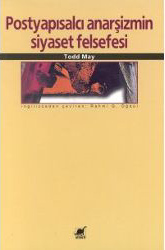 2 At the same period, I was working as an editor in Kabalci publishing house. This foreshadowed our understanding of “détournement” which characterized our second period. While I was active with Karasin’s anarchist photocopy magazines, newspapers, and pamphlets with friends I was also working in this publication house and there I initiated the publication of Murray Bookchin’s The Philosophy of Social Ecology, Essays on Dialectical Naturalism, translated into Turkish by our comrade Rahmi G. Ögdül. Rahmi also later translated other books related to anarchism and/or postanarchism: Peter Marshall’s William Blake: Visionary Anarchist, 6:45 Books, 1997; Todd May’s The Political Philosophy of Poststructuralist Anarchism, Ayrinti Books, 2000 and Hakim Bey’s TAZ, Studyo Imge Books, 2002. And as an editor in Kabalci Books, I also initiated a series of poetry books and we published Percy Shelley
2 At the same period, I was working as an editor in Kabalci publishing house. This foreshadowed our understanding of “détournement” which characterized our second period. While I was active with Karasin’s anarchist photocopy magazines, newspapers, and pamphlets with friends I was also working in this publication house and there I initiated the publication of Murray Bookchin’s The Philosophy of Social Ecology, Essays on Dialectical Naturalism, translated into Turkish by our comrade Rahmi G. Ögdül. Rahmi also later translated other books related to anarchism and/or postanarchism: Peter Marshall’s William Blake: Visionary Anarchist, 6:45 Books, 1997; Todd May’s The Political Philosophy of Poststructuralist Anarchism, Ayrinti Books, 2000 and Hakim Bey’s TAZ, Studyo Imge Books, 2002. And as an editor in Kabalci Books, I also initiated a series of poetry books and we published Percy Shelley
